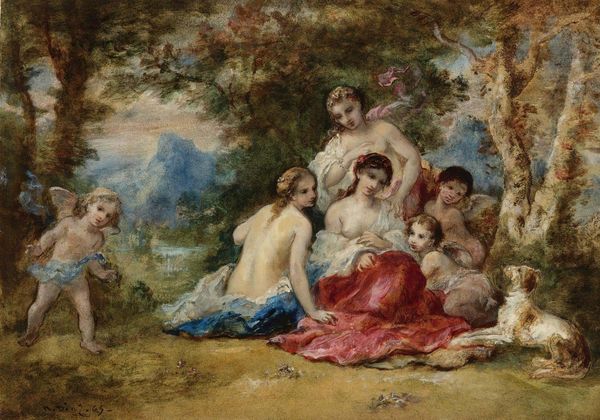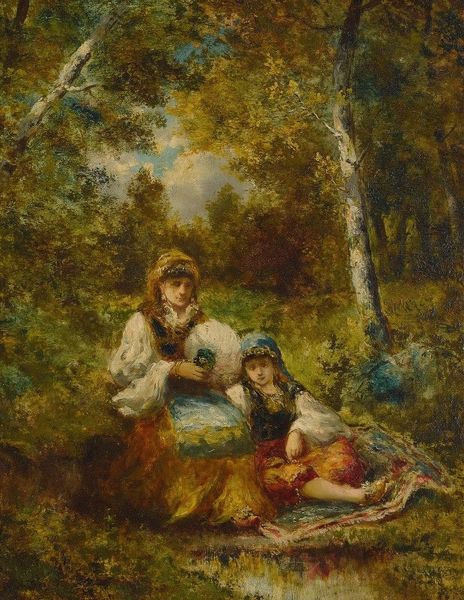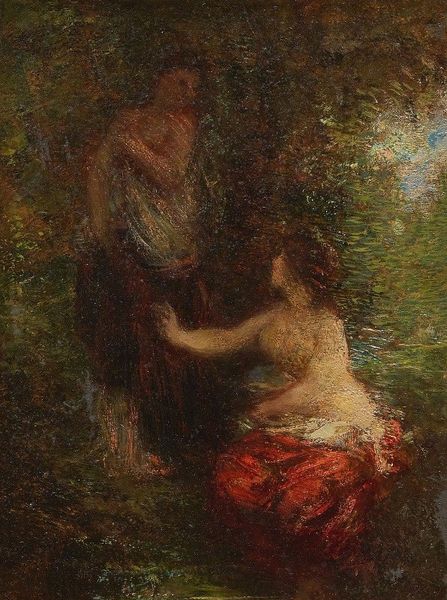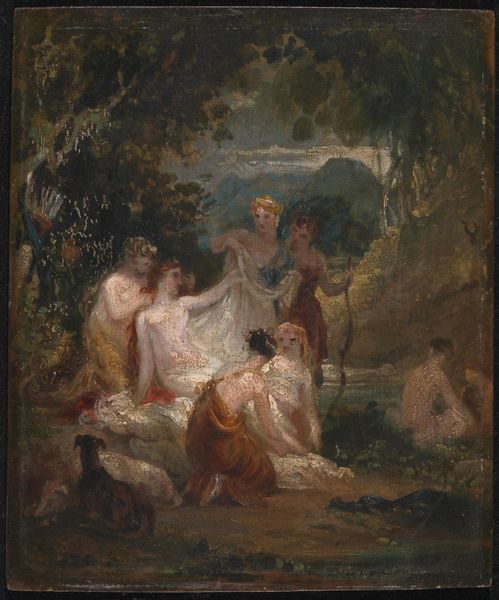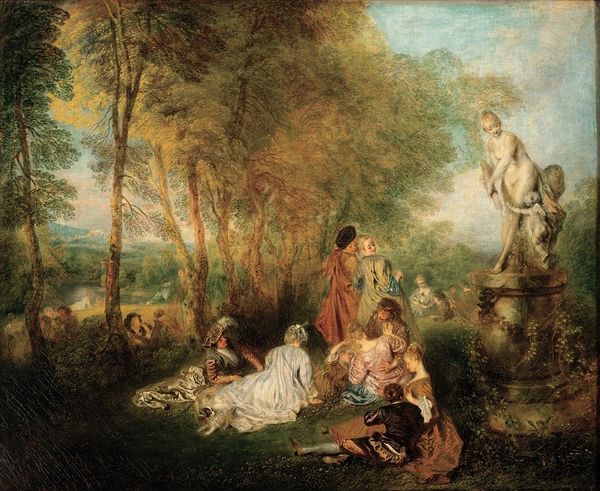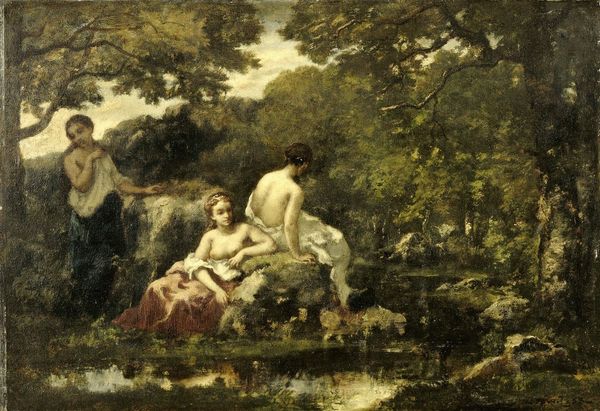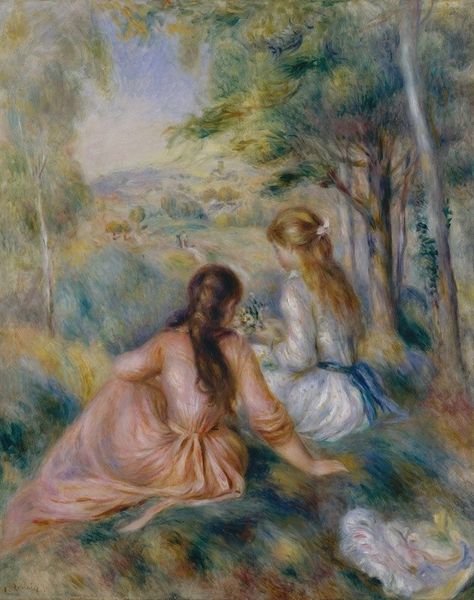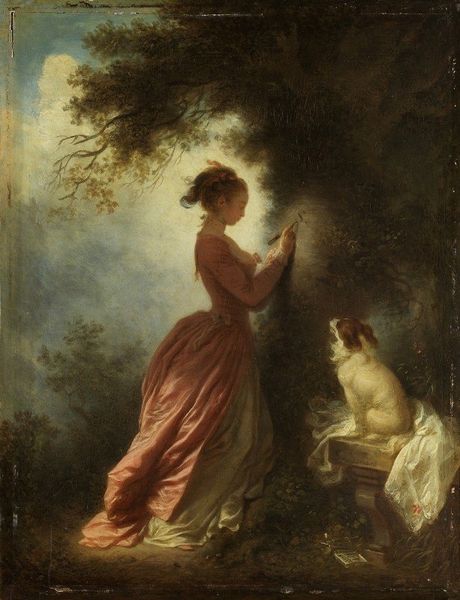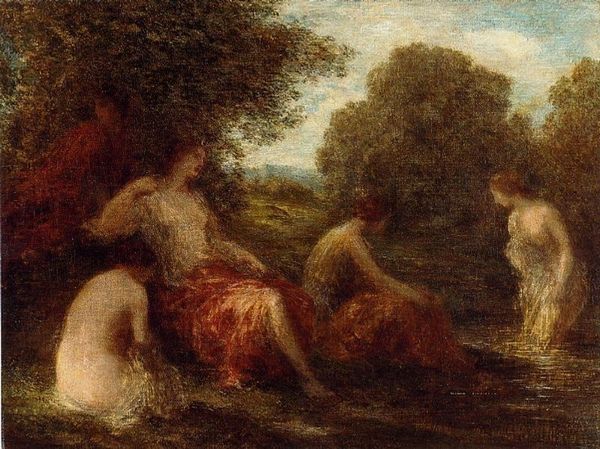
painting, oil-paint
#
painting
#
impressionism
#
oil-paint
#
landscape
#
figuration
#
oil painting
#
feminist-art
#
group-portraits
#
mythology
#
painting painterly
#
genre-painting
Copyright: Public Domain: Artvee
Curator: Welcome. Before us is "Trois Nymphes Près D’une Source," an oil painting by Henri Fantin-Latour. It seems to capture a moment of serene contemplation by these figures in a hazy landscape. What are your initial impressions? Editor: My first impression is one of almost palpable texture. The impasto technique—those thick layers of paint—makes the scene feel dreamlike, almost as if sculpted rather than simply painted. It really grounds the ethereal figures in a very physical, earthy setting. Curator: Indeed. Fantin-Latour’s technique blends Impressionistic color handling with a solid academic foundation. The loose brushwork, while suggestive of Impressionism, serves a more symbolic function. Note how the nymphs are situated in this undefined, arboreal space, evoking classical mythology. Editor: Absolutely, the artist seems preoccupied with rendering the materiality of this pastoral setting through very painterly gestures. Looking closer, the facture of the brushstrokes reveals so much, perhaps alluding to the labor and craftsmanship inherent in representing the ideal form, the artistic labor hidden behind the nymphic facade. The raw, exposed texture feels inherently modern. Curator: The work possesses a deliberate ambiguity. While classically inspired, the figures lack distinct characteristics, making them representative of an ideal rather than individualized beings. This tension between representation and abstraction creates a layered viewing experience, and asks whether or not ideal feminine beauty needs to be based on a particular face or form. Editor: It's fascinating to consider. I wonder, too, about the source of Fantin-Latour's pigments. Are we looking at a painting made from industrially manufactured paints, suggesting the rise of mass production, or are the pigments created from natural sources reflecting his intimate engagement with natural forms, drawing attention to the socio-economic context of artistic production? Curator: That’s a crucial consideration that further enriches our understanding. The confluence of materials and myth allows the artist to probe the intersection of idealized form and corporeal substance. The nymphs, bathed in soft light, emerge not as flesh and blood individuals but as symbols materialized through a dense network of brushstrokes and crafted pigments. Editor: The artist's material choices and how these interact to create an almost haunting tableau definitely encourage us to reconsider traditional notions of feminine representation in painting. Thank you, this has offered some new angles to examine. Curator: A pleasure. Let us move along, contemplating how form, idea, and process intertwine in the artist's vision.
Comments
No comments
Be the first to comment and join the conversation on the ultimate creative platform.


